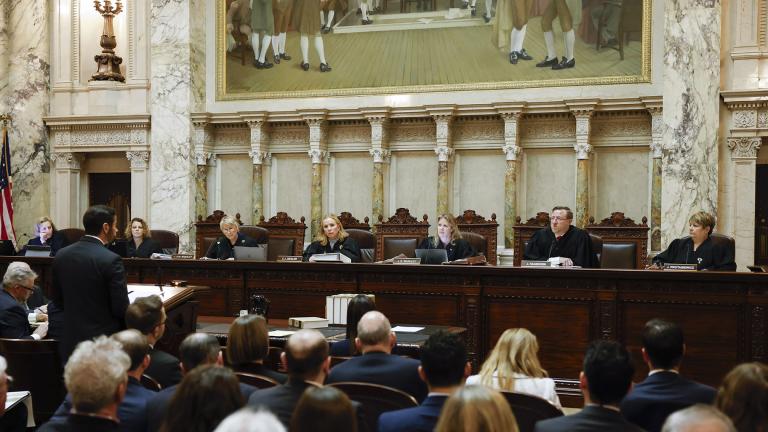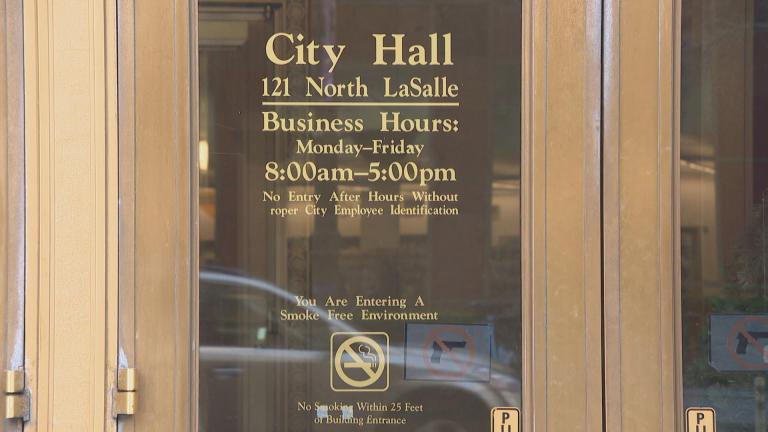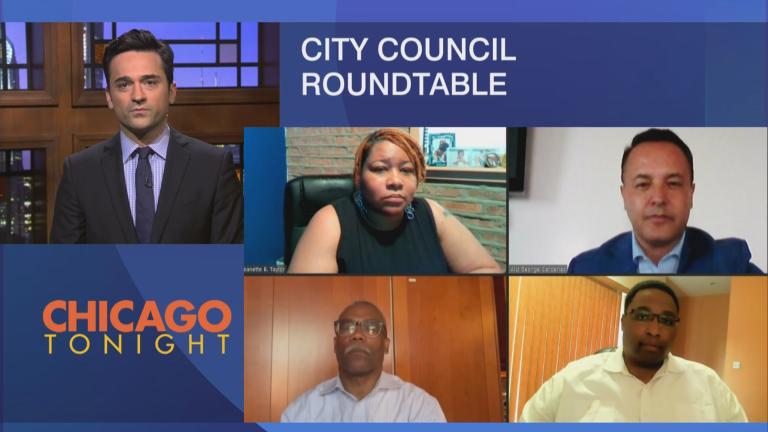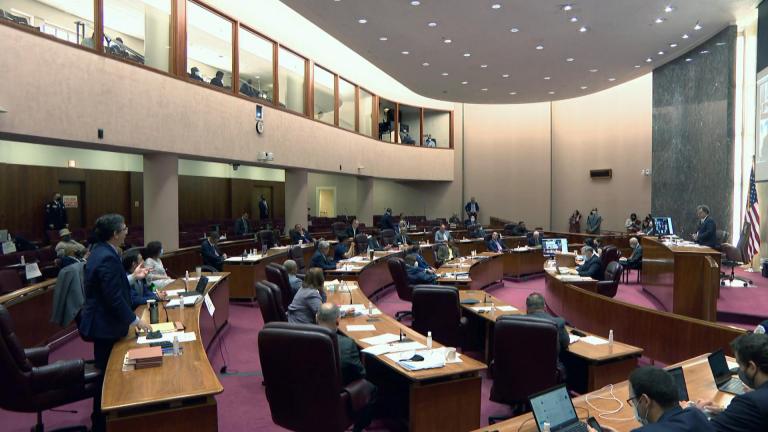Illinois lawmakers have turned their attention toward their task of drawing new Congressional district boundaries, but critics aren’t ready to give up on the previous mapmaking task they say the General Assembly fumbled.
The ad-hoc organization Illinois African Americans for Equitable Redistricting is seeking a U.S. Department of Justice investigation into the new Illinois House and Senate maps, signed into law Sept. 24 by Gov. J.B. Pritzker.
Among the allegations in the 65-page complaint is that the map “infringes upon the voting rights of Black voters in Illinois through retrogression and dilution” and that the plan is “the most regressive” in state history, in part because it reduces the number of majority Black districts and increases the number of white districts out of step with Illinois’ demographic makeup.
“They have made a mockery of the (federal) Voting Rights Act of 1965, and using the state voting rights act to subvert the voting rights of minorities,” said Valerie Leonard, a leader of the group. “Somebody’s got to start respecting what’s right and wrong and what’s legal, and the fact that the federal government Voting Rights Act should supersede anything that happens at the state level. So, they’ve (the DOJ) got a balancing act between making sure that they’re not imposing their will, so to speak, but at the same time somebody’s got to be the adult in the room as say ‘these are the laws, we’ve got to follow the law.’”
The letter to the DOJ says “ironically, these conditions are present at a time when Black leaders occupy some of the most influential offices in the State of Illinois, including Lieutenant Governor, Attorney General, Secretary of State, Speaker of the House, Chairperson of the Democratic Party of Illinois, Vice Chairperson of the Senate Redistricting Committee and Vice Chairperson of the House Redistricting Committee. The Illinois Legislative Black Caucus boasts of its largest and arguably, most powerful, contingent in the State’s history.”
Leonard said she believes that Illinois nonetheless ended up with a map that dilutes the Black vote because “the problem is they’re more concerned about their veto-proof majority, more concerned about politics … and that I believe takes priority to drawing majority Black districts.”
Democrats, who hold each of the positions listed in the letter as “influential offices” occupied by Black leaders, have super-majorities in the Illinois House and Senate. Gov. Pritzker is also a Democrat.
The state legislative map faces two other lawsuits. One brought by Illinois Republicans maintains a bipartisan commission should be convened to draw the map because the final version became law after a constitutional deadline. The Mexican American Legal Defense and Education Fund (MALDEF) is also suing, alleging that the new state legislative boundaries violates the federal Voting Rights Act by “unlawfully diluting the Latino vote and effectively preventing Latinos from meaningful participation in state elections.”
“The new maps should have increased the number of Latino-opportunity districts to nine house districts and four senate districts. Instead, the maps drawn in August by lawmakers only have six Latino districts,” MALDEF said in a press release describing its legal argument.
Democrats have maintained the new General Assembly map reflects Illinois’ diversity and meets legal standards.
The legislature has turned its focus to its next task: Drawing new U.S. House boundaries.
Population gains in other states means that Illinois will lose a seat in Congress; from 2023-2033, Illinois will have 17 seats rather than its current 18.
Leonard said she believes Democrats will prioritize drawing a map that will leave the GOP with two fewer seats. (The current delegation is split, 13 Democrats to five Republicans.)
Democrats are not tipping their hand.
They’re holding a series of hearings to seek public input.
But a House hearing on Tuesday lasted only 15 minutes, most of which was taken up by a roll call for attendance and a pro-forma introductory lesson on the redistricting process, given that zero witnesses submitted testimony virtually, or in-person.
State Rep. Tim Butler, R-Springfield, said the address listed for the Joliet hearing site location was incorrect and led to a literal dead-end; he said he was the only legislator on the committee to physically attend.
House redistricting chair State Rep. Lisa Hernandez, D-Cicero, noted that additional hearings are scheduled the rest of this week and encouraged members of the public to participate in them.
A few witnesses shared insights during a Senate redistricting hearing later on Tuesday afternoon.
Maps consultant Frank Calabrese offered suggestions for how to draw a map that would give Illinois two Latino Congressional districts, rather than the single one Illinois has now (The 4th district, represented by U.S. Rep. Jesus “Chuy” Garcia.).
Abigail Nichols with the League of Women Voters of Illinois testified that state legislators ignored public input when they drew the state legislative map, and that it appears they are following the same pattern with the Congressional version.
Republicans repeatedly asked that Democrats pledge to make public a draft of the Congressional map before the General Assembly votes on it.
“It is absolutely shameful, the lack of transparency, the refusal to answer basic questions,” State Sen. Jason Plummer, R-Edwardsville, said. “I would frankly be embarrassed.”
Co-chair Sen. Elgie Sims, D-Chicago, made no pledge about when the new Congressional boundaries would be made public.
“I will stipulate that the General Assembly will take up a map that reflects the fairness, reflects the equity, reflects this transparent process,” Sims said.
Instead of offering critiques from the sidelines Republicans can participate in the process by submitting their preferred version of a Congressional map via a publicly-available portal.
National attention is on Illinois’ designs for Congressional boundaries: How the districts are drawn can shift which candidate can win, and Democrats currently hold only a slim majority in the U.S. House.
Illinois Democrats may use their power to give candidates from their party the upper hand in Illinois, but Republicans are doing the same in states fully under GOP control.
The Congressional lines could also determine whether Republican U.S. Reps. like Rodney Davis (13th district) and Adam Kinzinger (16th district) attempt to return to D.C., or run for statewide office in Illinois.
Follow Amanda Vinicky on Twitter: @AmandaVinicky







